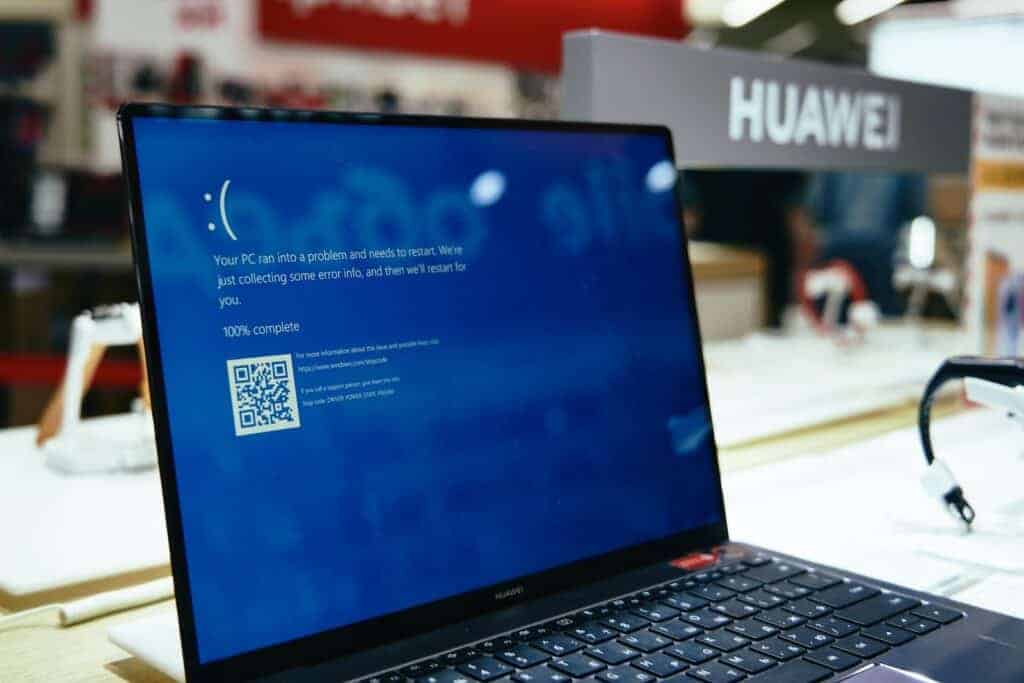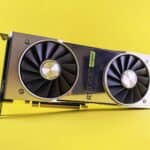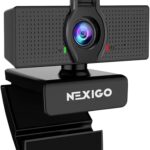Computer problems can be frustrating. Many issues have simple fixes you can do at home. From slow performance to strange noises, we’ll cover common hardware troubles and how to solve them.
Most hardware problems can be fixed by restarting your computer, updating drivers, or cleaning dust from components. These easy steps often solve issues without needing expert help. We’ll share tips to get your PC running smoothly again.
Knowing how to fix basic hardware issues can save time and money. You’ll learn to spot signs of trouble and take action fast. With a few handy tricks, you can keep your computer in top shape and avoid costly repairs.
Troubleshooting Common Computer Hardware Issues
Computers, like any complex machine, can experience hardware problems. Here’s a guide to identifying and fixing some common issues:
1. Computer Won’t Turn On
- Power supply: Ensure the power cord is securely connected to both the computer and a working outlet. Test the outlet with another device. If you suspect a faulty power supply, it’s best to have it replaced by a professional.
- Loose connections: Open the computer case and check that all internal cables and components are properly seated. Pay attention to the connections to the motherboard, hard drive, and graphics card.
- Faulty power button: In rare cases, the power button itself can be the culprit. Try gently cleaning it or, if you’re comfortable, replacing it.
2. Overheating
- Dust buildup: Dust acts as an insulator, trapping heat. Open the case and carefully clean out dust from the fans, vents, and components using compressed air.
- Fan failure: Ensure all fans (CPU, case fans) are spinning properly. If a fan isn’t working, it needs replacement.
- Thermal paste: Over time, the thermal paste between the CPU and heatsink can dry out. Reapplying thermal paste can improve heat transfer and cooling.
3. No Video Output
- Monitor connection: Check that the monitor cable is securely connected to both the computer and the monitor. Try a different cable or port.
- Graphics card: Make sure the graphics card is properly seated in its slot. If you have onboard graphics, try connecting the monitor to the motherboard’s video output.
- BIOS settings: Access the BIOS (usually by pressing DEL or F2 during startup) and check that the primary video output is set correctly.
4. Blue Screen of Death (BSOD)
- Driver issues: Outdated or corrupted drivers can cause BSOD errors. Update your drivers, especially for your graphics card and motherboard.
- Hardware failure: A BSOD can indicate a failing hard drive, RAM, or other hardware component. Run diagnostic tests (like Memtest86 for RAM or check your hard drive’s SMART status) to identify potential problems.
- Overheating: As mentioned earlier, overheating can lead to system instability and BSOD errors.
5. Slow Performance
- Hard drive: A failing or full hard drive can significantly slow down your computer. Check your hard drive’s health (SMART status) and consider upgrading to an SSD for faster performance.
- RAM: Insufficient RAM can cause slowdowns, especially when multitasking. Adding more RAM can greatly improve performance.
- Malware: Malware can consume system resources and slow down your computer. Run a full system scan with your antivirus software.
6. Peripherals Not Working
- Connections: Ensure the peripheral is properly connected to the computer. Try a different USB port or cable.
- Drivers: Check for updated drivers for the peripheral.
- Device Manager: Use Device Manager (search for it in Windows) to check for device conflicts or errors.
Upgrading Your PC for Better Performance
Sometimes, the best fix is an upgrade. Here are some common upgrades that can significantly improve your computer’s performance:
- SSD: Upgrading from a traditional hard drive to a solid-state drive (SSD) can dramatically speed up boot times, application loading, and overall system responsiveness.
- RAM: Adding more RAM can improve multitasking capabilities and make your computer feel snappier.
- Graphics card: If you’re a gamer or do graphics-intensive work, upgrading your graphics card can provide a significant performance boost.
- Processor: While a bit more involved, upgrading your processor can improve overall system performance, especially for CPU-intensive tasks.
Remember, before attempting any repairs or upgrades, it’s essential to back up your important data. If you’re unsure about any procedure, it’s always best to consult a professional technician.
Key Takeaways
- Many computer issues have quick fixes you can do yourself
- Regular maintenance prevents common hardware problems
- Basic troubleshooting skills can save time and money on repairs
Diagnosing and Troubleshooting Hardware Issues
Fixing computer hardware problems can be tricky. But with the right steps, you can often solve issues on your own. Let’s look at how to spot problems, run tests, and fix common hardware troubles.
Identifying Common Hardware Problems
Watch for signs of hardware issues:
- Computer won’t turn on
- Strange noises from inside the PC
- Blue screens or frequent crashes
- Overheating
- Slow performance
Overheating can damage parts. Keep your PC in a cool spot. Clean out dust regularly. Check fans to make sure they work.
A noisy hard drive might mean it’s failing. Back up your data right away if you hear clicking or grinding sounds.
Performing Hardware Diagnostics
Use built-in tools to check your hardware:
- Open Task Manager to see CPU and memory use
- Run Windows Memory Diagnostic for RAM issues
- Check Device Manager for driver problems
For deeper tests, try free tools like MemTest86 for RAM or CrystalDiskInfo for hard drives.
If your PC won’t start, listen for beep codes. These can tell you what’s wrong. Check your motherboard manual to decode the beeps.
Resolving Driver and Connectivity Issues
Outdated or corrupt drivers can cause many problems. Here’s how to fix them:
- Open Device Manager
- Look for yellow warning signs
- Right-click problem devices
- Choose “Update driver”
For network issues:
- Check cable connections
- Restart your router
- Update network card drivers
If Wi-Fi keeps dropping, try moving closer to the router. Walls and appliances can block signals.
USB ports not working? Try a different port first. If that doesn’t work, update USB drivers in Device Manager.
Practical Fixes for Hardware Problems
Computer hardware issues can often be fixed at home. Simple steps can solve many common problems. Here are some practical solutions for hardware troubles.
Managing Overheating Components
Hot computers run slow and can break. Keep your PC cool to avoid issues.
Clean out dust from your computer case. Use a can of compressed air to blow out vents and fans. This helps air flow better.
Make sure your PC has good airflow. Don’t put it in tight spaces. Leave room around vents.
Check if all fans are working. Replace any that have stopped. Proper ventilation is key to prevent overheating.
If your PC still runs hot, try these:
- Update your BIOS
- Use a cooling pad for laptops
- Add more case fans
- Apply new thermal paste to the CPU
Upgrading Hardware Components
Slow PCs can often be fixed by adding new parts. This can be cheaper than buying a new computer.
Add more RAM. This is an easy upgrade that can speed up your PC a lot. Check how much RAM your PC can use first.
Replace your hard drive with an SSD. This makes your computer start up and load programs faster.
Upgrade your graphics card for better gaming or video editing. Make sure your power supply can handle it.
Tips for upgrading:
- Back up your data first
- Check if parts are compatible
- Follow guides or ask for help if unsure
- Use anti-static gear when handling parts
Addressing Peripheral Device Failures
Problems with devices like printers or mice are common. Here’s how to fix them:
For printers that won’t print:
- Check ink levels and paper
- Restart the printer
- Update or reinstall printer drivers
If your mouse acts weird:
- Clean the sensor
- Try a different USB port
- Update mouse drivers
For external hard drives not showing up:
- Try a different USB cable
- Check Disk Management in Windows
- Use the drive on another PC to test it
Peripheral issues often come from driver problems. Keep your drivers up to date to avoid trouble.
Frequently Asked Questions
Computer hardware problems can be tricky. But most issues have simple fixes. Here are some common questions and answers about hardware troubles.
What are common signs of hardware failure in computers?
Strange noises from the computer case are a red flag. The PC may freeze or crash often. Blue screen errors can point to hardware issues. Slow performance might mean failing parts. Watch for these signs to catch problems early.
How can overheating issues in computer hardware be resolved?
Clean out dust from vents and fans. Make sure air can flow freely around the PC. Check that all fans are working. Use a cooling pad for laptops. Keep the computer in a cool spot. These steps can prevent overheating.
What steps should be taken to fix hard drive errors?
Run a disk check tool to find errors. Back up important files right away. Try disk repair software. If that doesn’t work, replace the drive. Bad sectors can often be fixed by the computer itself.
How to troubleshoot power supply problems in desktop PCs?
Check all power cables are plugged in tight. Listen for unusual noises from the power supply. Test the outlet with another device. Try a different power cable. If these don’t work, the power supply may need replacing.
What are the best practices for replacing or upgrading computer RAM?
Turn off the PC and unplug it first. Ground yourself to avoid static. Check the manual for RAM slot locations. Gently push RAM sticks until they click. Don’t force them. Boot up to check if the new RAM is working.
How can graphics card issues be identified and fixed in a PC?
Look for visual glitches on the screen. Update graphics drivers first. Check if the card is seated properly. Clean out dust from the card. Test with a different monitor. If problems persist, the card might need replacing.







